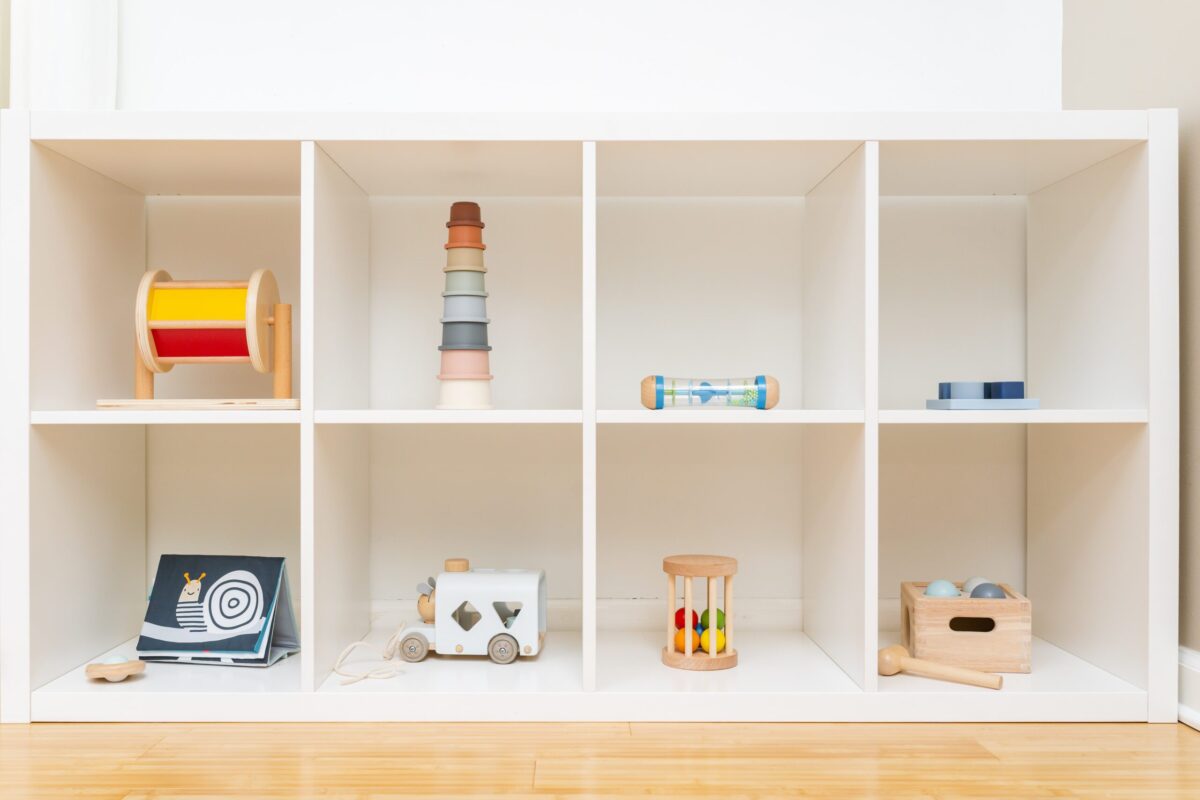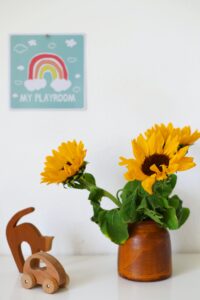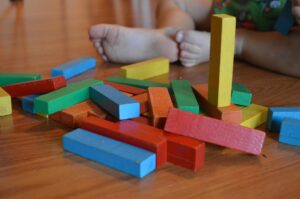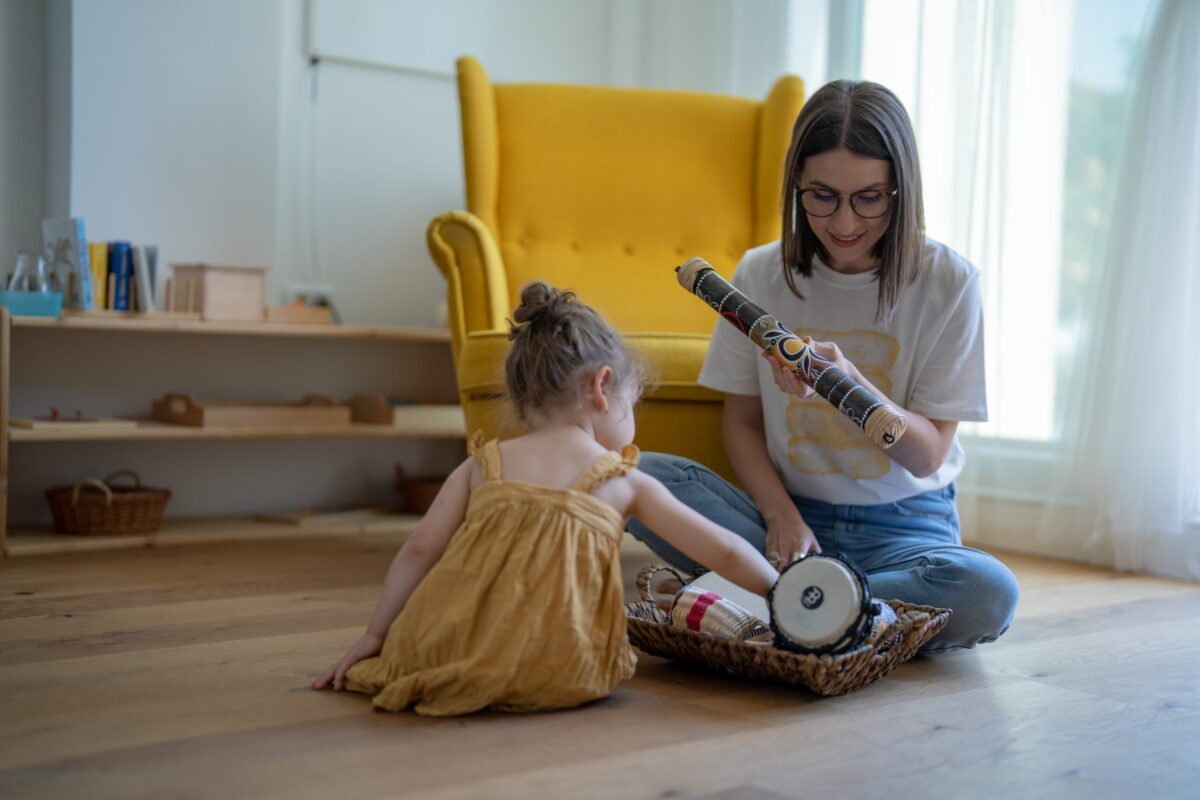A Beautiful, Inviting Environment
When you do your best work? Is it at a cluttered desk full of papers, old dishes, and materials for potential projects? I prefer to work at a desk with just a few items. I want to have exactly what I need and nothing more. A pleasant and organized space also helps. It doesn’t always happen, but my brain simply works better in such an environment. I have noticed the same phenomenon with my kids and their work. Several aspects of the Montessori environment help kids engage in quality work. The beauty in a Montessori environment is inviting and sensorial and has plentiful benefits for kids.
What Is Beauty in a Montessori Environment?
Maria Montessori, in her founding of the Montessori Method in the early 20th century, specified the best type of environment for learning. Dr. Montessori said, “The environment must be rich in motives which lend interest to activity and invite the child to conduct his own experiences.” Generally in Montessori classroom spaces, the materials are organized, clean, and accessible to children. The walls may contain artwork hung at the child’s level. Ideally, there is a sense of harmony and peace in the space. All of these components work together to create beauty in a Montessori environment and an appealing space for education.
Creating Beauty in a Montessori Environment at Home
As a parent seeking to create a beautiful environment in our home, I find it helpful to start by observing the space. I’ll ask, “How does this space make me feel? Is it overwhelming and busy? Do the contents of the room make me feel stressed?” I’ll also observe how my kids behave in a space. I have found that when there are too many toys and materials available, my kids often choose to go to a different space. They will take an item that interests them to a more open, airy part of our home. As parents, we can help create beauty in a Montessori home environment by choosing to have fewer, more quality items in a room. Perhaps we can donate a portion of the toys that are no longer needed.
Tips to make your Montessori home more beautiful include choosing natural materials, when possible, and carefully selecting which types of noises and music are in the environment. In our house, this is always a work in progress. I cannot always choose which toys our children receive as gifts from others. In my opinion, there is no need to create stress about trying to simplify the environment. Over time, I prioritize purging, organizing, and decorating in a way that feels good for our family. Starting a toy rotation and focusing on Montessori at home toys can both simplify the environment.
Beauty Is Inviting to Children

The beauty of a Montessori environment matters because it can invite children to engage in their work. The tidy and accessible materials for work are ready and prepared for them. I have found that a minimal environment is calming and contributes to my children’s focus. My kids have to exert minimal effort to start playing. Additionally, the Montessori environment is set up simply so that children don’t require adults for many types of work. This is another aspect of the Montessori environment that gives kids a low barrier to entry to start working.
Maria Montessori emphasized the use of precious and fragile items in a beautiful, prepared Montessori learning space. She noticed that children enjoyed handling precious items and that they managed them with care. My own kids are drawn to beautiful and sometimes fragile items. We have a ceramic tea set that my mother saved from my own childhood. It’s sized to suit a doll and has a soft pink floral design. All my children enjoy playing with this set. They thoughtfully and carefully arrange the pieces, removing the lids on the sugar and creamer bowls and gently placing them back again. They also enjoy serving one another tea. The beautiful and precious nature of this tea set is an example of an item that engages kids with its beauty.
Beauty Engages the Senses
 Beauty in a Montessori-inspired space creates a sensorial experience for kids. The sense of sight is engaged through an organized and tidy space. Artwork hung at the child’s level exposes them to others’ creations. Additionally, light from windows can enhance the beauty of the learning environment. Research has shown that windows with an appealing view can contribute to student learning. Moreover, the Montessori environment emphasizes the importance of natural materials. Children can use their sense of touch to experience natural materials. Wooden and cloth toys, for instance, have texture and weight in the hands. Plants are also a great natural item that can contribute to the beauty of a Montessori environment.
Beauty in a Montessori-inspired space creates a sensorial experience for kids. The sense of sight is engaged through an organized and tidy space. Artwork hung at the child’s level exposes them to others’ creations. Additionally, light from windows can enhance the beauty of the learning environment. Research has shown that windows with an appealing view can contribute to student learning. Moreover, the Montessori environment emphasizes the importance of natural materials. Children can use their sense of touch to experience natural materials. Wooden and cloth toys, for instance, have texture and weight in the hands. Plants are also a great natural item that can contribute to the beauty of a Montessori environment.
Another sense that can be engaged is the sense of hearing. I do not often initially consider the importance of sounds in an environment, but sounds and noises can impact a learning environment. Preferences on the best sounds for learning and focus vary among individuals. In our home, I have found that music that is too melancholy, loud, or boisterous is not a great fit. Music that is calm and soothing and without lyrics seems to work well for us.
In our home, I find it helpful to take note of how the sounds, smells, and sights make me feel and observe how these things seem to impact my own children. Often, small changes can lead to a much more pleasant environment, suitable to quality work and play.
The Importance of Beauty in a Montessori Environment
 Beauty in the Montessori environment serves many purposes. The appealing and attractive nature of the Montessori space serves to make learning a sensorial experience and inspire children. Orderly, organized, and clean materials invite kids in and create a sense of calm and focus. Additionally, natural materials, art, and precious items activate children’s senses and engage them.
Beauty in the Montessori environment serves many purposes. The appealing and attractive nature of the Montessori space serves to make learning a sensorial experience and inspire children. Orderly, organized, and clean materials invite kids in and create a sense of calm and focus. Additionally, natural materials, art, and precious items activate children’s senses and engage them.
When creating beauty in the Montessori home environment, I encourage parents to start with small steps. Initially observing how a space makes you feel can often lead to the next best step. Noticing how your children behave in a space can also give clues about where to start. Some first steps can include organizing, purging, and focusing on quality over quantity of toys and materials for kids. Simply clearing extra items and unneeded toys from one area can boost inspiration and a child’s willingness to engage. Hanging a piece of art at a child’s level is another way to quickly add beauty to a space. In the long run, by making small changes and adjustments, parents can be successful creating beauty in their Montessori home environment.
Kelly is a former scientist and mother of three young kids. She enjoys writing about her experiences in parenting and regularly creates free printable resources for parents and teachers for her blog Hey Kelly Marie. She currently lives in Kentucky with her family.





0 Comments